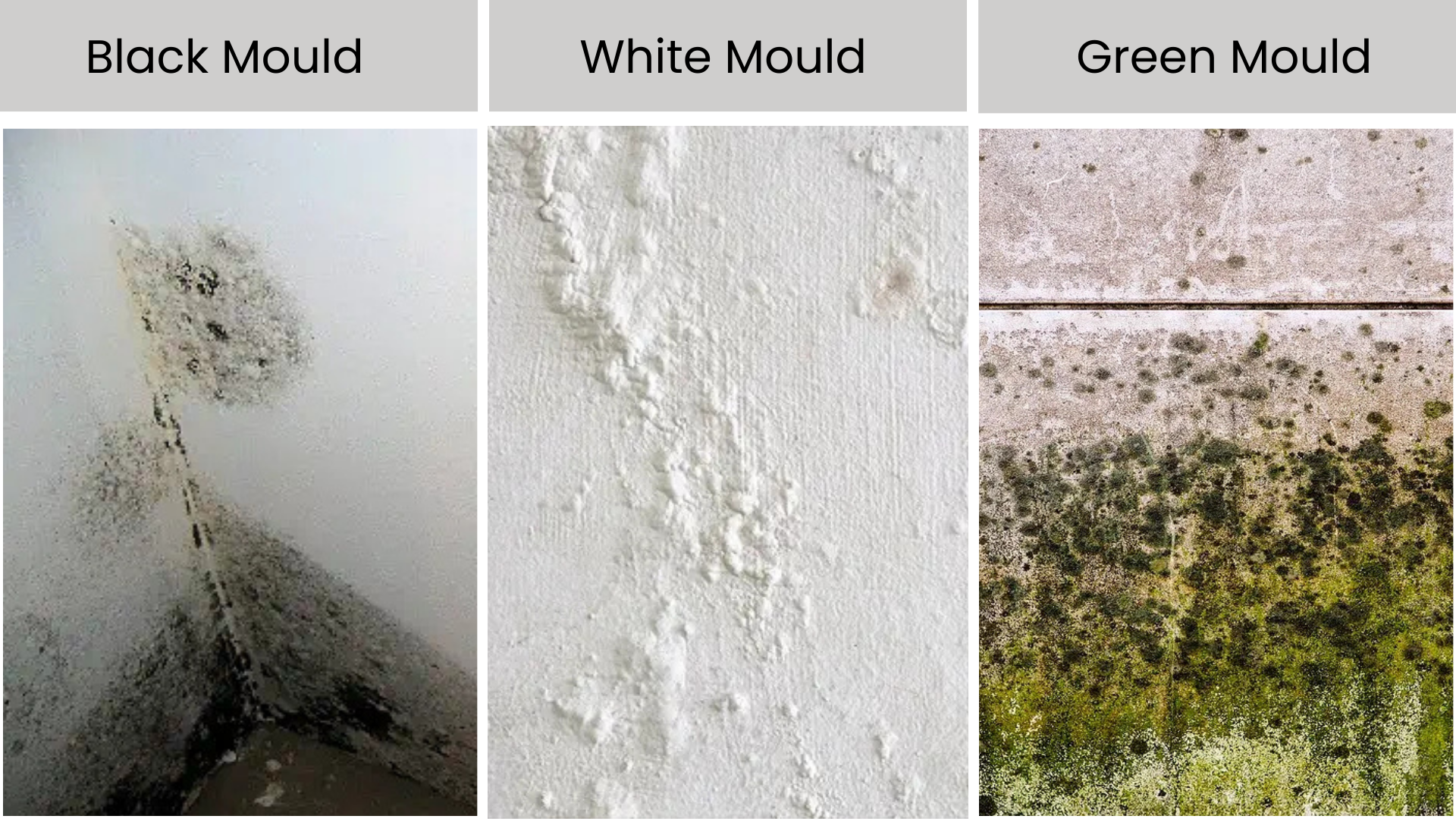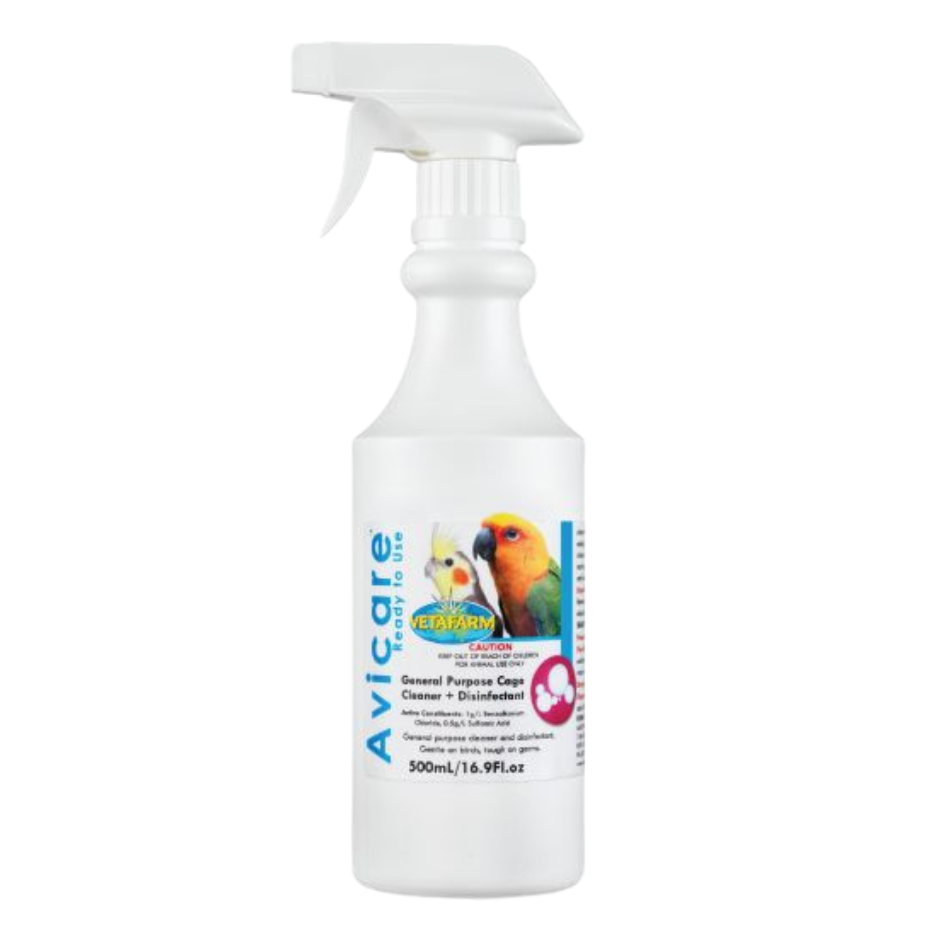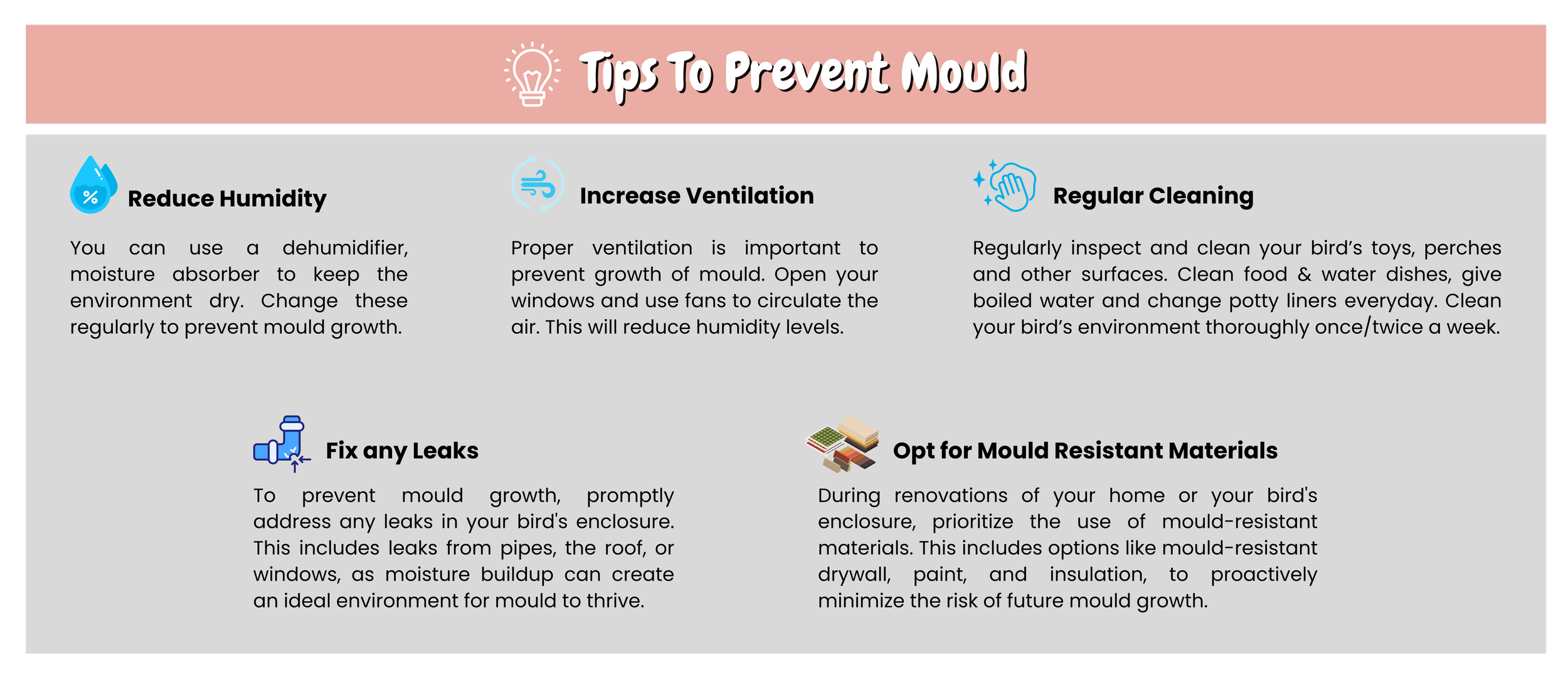Protect Your Parrot from Mould
Mould is a common household issue, and while we humans are aware of its health risks, we need to understand how it’s even more dangerous to our pet birds. Our feathered friends have delicate respiratory systems and are extremely vulnerable to the harmful effects of mould spores. Inhaling these spores can easily lead to serious respiratory infections. Let's explore this issue further.
What is mould?
Mould is a type of fungus that thrives in moist environments. It can appear as black, white or green patches on walls, ceilings and other surfaces. Both humans and animals can experience allergies and respiratory issues due to mould spores.
One particularly dangerous mould is Stachybotrys chartarum, known as black mould. This greenish-black mould has a slimy appearance when wet but, when dried, appears powdery. It produces a harmful mycotoxin that can cause serious health problems in humans. These include neurological symptoms like brain fog, difficulty concentrating, and respiratory issues such as a burning sensation in the throat and nose, making breathing difficult. While Stachybotrys chartarum has a distinct greenish-black appearance, other moulds can resemble it.
Why is mould dangerous to our birds?
Birds are highly susceptible to mould due to their unique respiratory system. Unlike mammals, they have specialized air sacs and a large sinus cavity, making them more vulnerable to inhaling and absorbing mould spores. Mould infections in birds can range from acute and severe to chronic. Aspergillus is a common type of mould that affects pet birds.
In countries with four-seasons, autumn is a particularly risky time, as turning on the furnace after a cold spell can circulate mould spores throughout the home. This can lead to rapid and often fatal infections in birds. Regular filter changes, especially before turning on the furnace in fall, are crucial to minimize this risk.
Mould thrives in humid conditions. Yes, Singapore can be really humid at times. When humidity drops, it releases spores into the air. These spores can enter a bird's respiratory system, where they grow and multiply, on the surfaces of air sacs or the lung tissue. Severe infections can overwhelm a bird's immune system, especially when a large number of spores invade the respiratory tract.
How to identify mould?
Mould can be difficult to detect, especially if it is hidden behind walls, other hard to reach areas or not as obvious as it looks. There were times I spent an hour or so trying to figure out if what I was seeing on my bird’s perch / surroundings was mould or not.
Unfortunately, Singapore has ideal conditions for mould growth. Mould requires relative humidity of above 60 per cent to grow and with Singapore's average relative humidity of 82 per cent, it creates a conducive environment for the fungus to thrive. Nevertheless, we can still do our best to prevent mould growth.
Here are some signs to look our for:
Unpleasent odour
Visible patches/clusters
Changes in your bird’s behaviour
Here some examples of how mould can look like:
If you’re unsure if what you are seeing is actually mould or not, another way to identify it is if your bird is coughing, sneezing or showing any other signs of respiratory distress. This may very well be a sign of mould exposure.
How to clean mould?
Once you identify the presence of mould in your bird’s surroundings, cage, toys, perches or other accessories, immediately remove your bird from it’s cage and surroundings. Check up on your bird to assess if it is has any allergies. Even if your bird does not show any signs of respiratory distress, continue to monitor it. In the event your bird is unwell, please visit an avian vet for further diagnosis.
When cleaning mould, wear protective gear and remove all the toys, perches, food and water bowls and clean them thoroughly. By doing so, you are eliminating any mould that has spread. Give the cage a good wash as well. Bleach is not recommended for cleaning mould in a bird's environment as it can be harmful if ingested or inhaled. Use a bird-safe cleaner or a diluted mixture of distilled white vinegar and water instead.
Here’s an example of a bird-safe cleaner I found:
Once everything has been washed, make sure to dry the cage and all items meticulously. You can use a fan or dehumidifier to dry it completely. This will help prevent the mould from coming back. I usually dry my bird’s cage and other items by placing it in a sunny area.
Last but not least, give the mould-infested area or surroundings a good scrub and make sure to dry the place completely as well.
How to prevent mould?
Prevention is the key to avoiding mould growth in the first place. Although Singapore’s hot and humid weather enables mould to thrive, there are still ways to prevent mould from coming back:
Good nutrition is also crucial in keeping our birds healthy and free from disease. This is particularly important in prevention of fungal infections. Diets lacking in essential nutrients, such as seed-only diets, can lead to vitamin A deficiency.
Imbalances in vitamin A levels disrupt cellular function, affecting their ability to perform their normal functions. This makes birds more vulnerable to infections from bacteria, viruses, and fungi. When vitamin A levels are inadequate, the respiratory tract becomes more susceptible to fungal invasion. The warm environment within the respiratory system allows fungi to thrive and multiply unchecked.
In conclusion,
To ensure optimal bird health, we must carefully consider our bird’s environmental needs. While recreating their natural habitat's temperature and humidity is crucial for healthy skin and feathers, we must also remain vigilant against increased fungal spore growth, as mould thrives in warm, humid conditions. By diligently preventing mould growth, we can create a healthy and mould-free environment for our beloved birbies!




